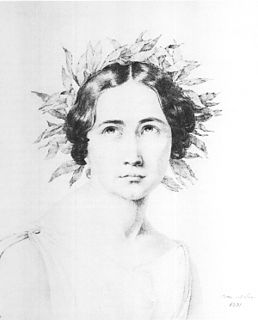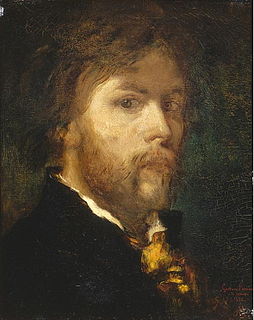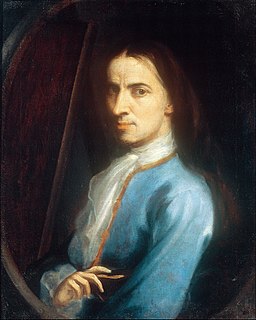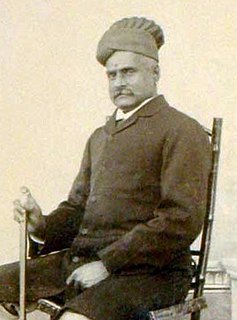 W
WJosé de Alcíbar, or Alzíbar was a Mexican painter, of Basque origin; active from 1751 to 1801.
 W
WAndrés Amaya was a Spanish Baroque painter in oils of religious subjects. He was active in the region of Castile and León, primarily in the city of Valladolid.
 W
WJacopo Amigoni, also named Giacomo Amiconi, was an Italian painter of the late-Baroque or Rococo period, who began his career in Venice, but traveled and was prolific throughout Europe, where his sumptuous portraits were much in demand.
 W
WÉtienne Azambre was a French painter, best known for his religious and genre scenes, done in a subdued manner.
 W
WMiguel Mateo Maldonado y Cabrera (1695–1768) was a Mestizo painter born in Oaxaca but moved to Mexico City, the capital of Viceroyalty of New Spain. During his lifetime, he was recognized as the greatest painter in all of New Spain. He created religious and secular art for the Catholic Church and wealthy patrons. His casta paintings, depicting interracial marriage among Amerindians, Spaniards and Africans, are considered among the genre's finest. Cabrera's paintings range from tiny works on copper to enormous canvases and wall paintings. He also designed altarpieces and funerary monuments.
 W
WJuan Correa (1646–1716) was a distinguished Mexican painter of the late seventeenth and early eighteenth centuries. His years of greatest activity were from 1671 to 1716. He was an Afro-Mexican, the son of a Mulatto or dark-skinned physician from Cádiz, Spain, and a free black woman, Pascuala de Santoyo. Correa "became one of the most prominent artists in New Spain during his lifetime, along with Cristóbal de Villalpando." Manuel Toussaint considers Correa and Villalpando the main exponents of the Baroque style of painting in Mexico. Correa was a very productive religious painter, with two major paintings in sacristy of the Cathedral of Mexico City, one of the Immaculate Conception and the other An Allegory of the Church. He also painted major works for the Jesuit church in Tepozotlan, Mexico. According to Toussaint, Correa is "important in achieving a new quality, in the creative impulse he expresses, and which one cannot doubt embodies the eagerness of New Spain for an art of its own, breaking away from its Spanish lineage. Here New Spain attains its own personality, unique and unmistakable." Correa was José de Ibarra's teacher.
 W
WPietro di Giovanni D'Ambrogio (fl.1410-1449) was an Italian painter of the Sienese school.
 W
WJean-Louis Forain was a French Impressionist painter and printmaker, working in media including oils, watercolour, pastel, etching and lithograph. Compared to many of his Impressionist colleagues, he was more successful during his lifetime, but his reputation is now much less exalted.
 W
WGebhard Fugel was a German painter specializing in Christian themes. He is best known for his work as the leading artist of the Crucifixion Panorama in Altötting.
 W
WJuan Gerson was a high status indigenous Nahua painter, named after the French theologian Jean Gerson, working in Tecamechalco, Puebla. Not until 1962 when a group of Mexican scholars found documentation to his high status indigenous heritage was Gerson identity revealed. It was previously thought he was Flemish, trained in Italy, working from entirely within the European tradition before coming to colonial Mexico. Art historians Carolyn Dean and Dana Leibsohn consider Gerson's case of misrecognition as "reveal[ing] once again our refusal to recognize the indigene unless his or her work is visibly pre-Hispanic. Further, the revisions of scholarship that follow the discovery of these artists' genetic make-up involve a literal re-seeing of their work." Mexican art historian Francisco Pérez Salazar considers his work "mediocre and defective."
 W
WMateo Gilarte was a Spanish Baroque painter.
 W
WJosé de Ibarra (1685–1756) was a Mexican painter, born in Guadalajara, Mexico, and died 21 Nov 1756 in Mexico City, in the Viceroyalty of New Spain.
 W
WLucia Maria Ingemann was a Danish painter who is best known for her large altarpieces depicting biblical figures, many of which are displayed in Denmark's churches.
 W
WEmilie Linder was a Swiss painter and art patron.
 W
WGustave Moreau was a major figure in the French Symbolist movement, whose main emphasis was the illustration of biblical and mythological figures. Moreau's paintings appealed to the imaginations of some Symbolist writers and artists. He is recognized for his works that are influenced by the Italian Renaissance and exoticism. Many of his works are on display at the Musée Gustave Moreau, a museum in Paris dedicated to his works.
 W
WYulian Yakovich Pankevych (Ukrainian: Юліа́н Якович Паньке́вич: was a Ukrainian painter, writer and activist. Sometimes, he went by the pseudonym, Простен Добромисл. He often gave free art lessons to children. He was also a talented violinist and singer and organized choral societies in small villages.
 W
WTiburzio Passarotti or Passerotti was an Italian painter; primarily of religious subjects.
 W
WJuan Rodríguez Juárez was an artist in the Viceroyalty of New Spain. He was a member of a Spanish family long noted for their accomplishments in the world of painting. His brother was Nicolás Rodríguez Juárez, who was like himself, an established painter in New Spain. He was the son of Antonio Rodríguez (1636–91), a notable Spanish painter. His maternal grandfather José Juárez and maternal great great grandfather Luis Juárez were also notable painters in Spanish history and prominent in the Baroque era.
 W
WFrantišek Seraf Sequens, or Franz Sequens, was a Czech church and history painter.
 W
WSimon von Taisten, originally known as Simon Mareigl or Marenkl was a Tyrolean painter in the Late Gothic style. He created numerous frescoes, panel paintings and altarpieces in Gorizia, the Puster Valley, Lienz District and Carinthia.
 W
WRaja Ravi Varma was an Indian painter and artist. He is considered among the greatest painters in the history of Indian art. His works are one of the best examples of the fusion of European academic art with a purely Indian sensibility and iconography. Additionally, he was notable for making affordable lithographs of his paintings available to the public, which greatly enhanced his reach and influence as a painter and public figure. His lithographs increased the involvement of common people with fine arts and defined artistic tastes among common people. Furthermore, his religious depictions of Hindu deities and works from Indian epic poetry and Puranas have received profound acclaim. He was part of the royal family of erstwhile Parappanad, Malappuram district.
 W
WCristóbal de Villalpando was a Baroque Criollo artist from New Spain, arts administrator and captain of the guard. He painted prolifically and produced many Baroque works now displayed in several Mexican cathedrals, including the cathedrals in Querétaro and Mexico City, as well as a depiction of the Zócalo in Mexico City, showing the damage of the 1692 riot to the viceregal palace three years earlier.